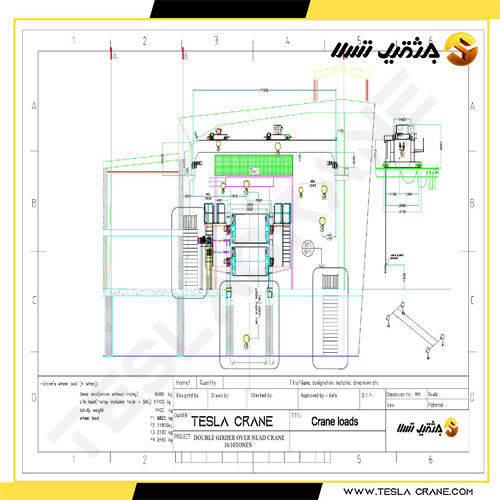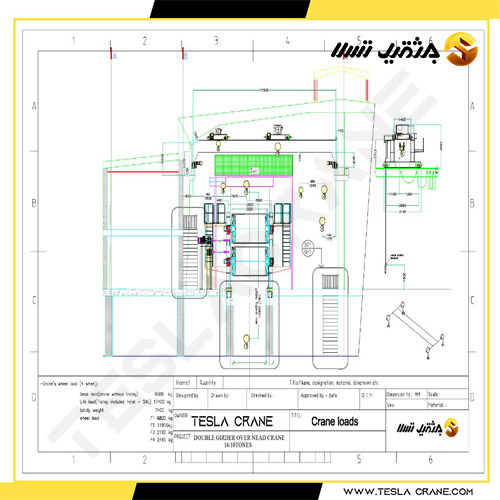The most optimal design with specialized and experienced personnel of Tesla crane
The following points should be considered in designing a crane
- Type of crane and its operation (overhead crane, gate crane, jib crane, etc.)
- Number and frequency of downloads
- Maximum displaced weight
- Working conditions and life expectancy of the crane, load application modes, dimensions
- Removable goods
- Environmental conditions and special conditions (crane opening, lifting height, path length, etc.)
Before entering the crane design stage, it is better to get acquainted with the related concepts:
Types of cranes
crane
It is a device that helps you to transfer loads vertically and horizontally. Movable or stationary cranes move in three modes: muscle energy, electrical energy or a combination of the two.
-
traveling crane
It is a crane that moves on one or more rails.
-
overhead travelingcrane
This type of crane is mobile, this crane moves on the rails and moves your load vertically and horizontally.
-
ganty crane
This type of crane is mobile and mounts on two legs and is equipped with a vertical hoist.
-
monorail crane
It is a type of mobile crane in which the hoisting device and the control room (if any) move on a rail and transfer the load.
-
locomotive crane
It is a type of crane that is installed on the engine.
-
jib crane
These cranes are available in two types, fixed and rotating. This crane has a horizontal or inclined jib and in some cases this arm is controlled by a trolley. The position of the hook of this crane in relation to the axis of the crane rotation is determined by its open slope and length.
-
tiering hoist
It is a type of crane that has its own platform that determines the position of the load and is used to store goods at different heights and places.
-
crabs andwinches
This crane is fixed and moves your goods with a cable or chain wrapped around the cylinder. This device is fixed to the ground due to foundation screws or other tools.
-
electric hoist
This type of crane is available in two types, fixed and mobile, which transmit the load by means of a chain or cable through an electric motor. This crane is used both independently and as a sub-crane for other cranes.
-
pneumatic hoist
The force that drives this type of crane is compressed air.
-
block and tackle
These cranes are available in two types, fixed and mobile, and include one or more pulleys, and the required force is transmitted through the cable to the pulleys and load hooks.



